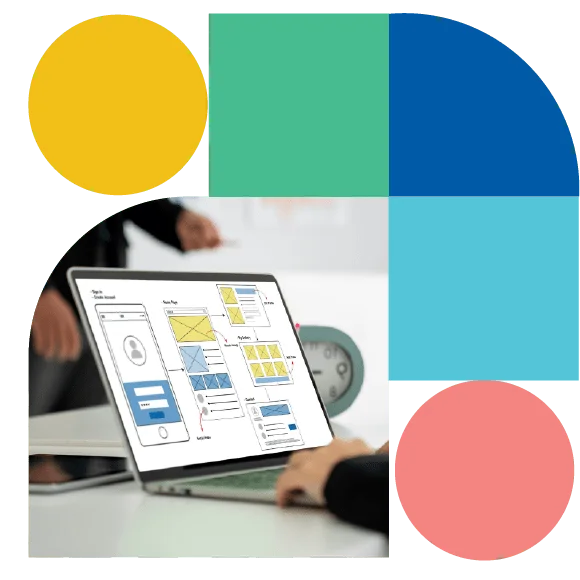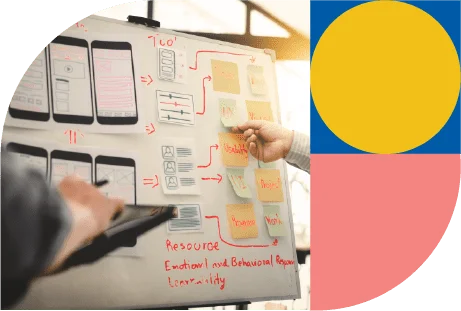
Blog

You have a product vision or an innovative idea. So, what do you think is the next step?
Product development? No.
Asking for investment? No.
These two are not possible until and unless you create a product prototype. Prototyping means converting the idea to a physical or digital form. It is a tangible form of your product, giving it a shape, size, and look like the final product.
It is an initial model used to test your product’s technical viability. You can use it as a presentation to investors and stakeholders to make them invest in your idea. It helps others to understand the product idea in a better way.
Let’s understand why product prototyping is important and what the steps are for creating it.
A prototype is a three-dimensional version of your idea. It’s like giving your vision (an intangible) a physical form (tangible).
Product prototyping is important because of the following reasons:

You have an idea of the product. In your mind, everything is fine. There are no flaws, no challenges, and the idea is workable.
But all this still needs to be proven okay in practice. Prototyping helps you find its practicality or viability. By prototyping, you can test your idea’s functionality – whether it is feasible or not. When you convert your idea from theory to practice, you get to know the reality.
When you create a prototype, you get to know whether your idea is doable.
A prototype is a working sample of your idea. Once you have this mock-up product, you can develop the full product. Thus, you can have a comprehensive description of your product’s features, looks, and functionalities.
When you prototype, you materialize the virtual design or a concept into a tangible form. Others in your team are better able to understand your idea.
People believe what they can see in a tangible form. Your idea is tangible once you convert it into a product or prototype. So, you need to develop a workable model to make investors understand your idea.
The prototype is the medium through which you communicate your idea to investors. If investors like the prototype and find it viable, they will invest. Thus, you can get investment for your innovation only if you give a look and feel to your product idea.
Whenever you have a product idea, it comes from the motivation to solve a problem. You aim to satisfy your target audience with it. So, unless you meet your customers’ expectations, the idea does not serve any purpose.
A product prototype helps you iterate and achieve customer expectations in subsequent versions. You can make trials and errors with the product’s technicalities or aesthetic sense. With every iteration, you can move one step closer to customer standards.
Once you develop the product prototype, you develop confidence in the feasibility of your idea. Thus, you can develop a product development plan. You can create a budget, allocate resources, and develop timelines for the project.
If you find the prototype infeasible or too complex, you can drop the idea for the time being. You can give more thought to it to make it simpler and easy to achieve. Thus, you also save production costs by working on a prototype before the final product.
Following are the steps to create a prototype:
You have an idea, and want to convert it into a prototype. But first, conduct a detailed research about your idea. Try finding out any similar products; you will get to know whether you have an innovative idea or not.
Maybe a similar product exists, and you just offer more features or value. In that case, you need to assess the products to determine what different you can offer.
You also need to conduct a study on your product’s market viability. You must know its competitors, costs, value for customers, and production process. Another concern is knowing if the product is valuable to the customer. You must know your targeted audience’s needs, the use of the product, and the value it generates.
You have the idea, and you have conducted detailed research around it. Now you can create a small diagram of the product. It will serve as a sketch of your product concept.
You can create a sketch on paper or a virtual diagram in a computer program. It must show how your product looks and must mention the dimensions and materials. It must show the product externally as well as internally, along with the process.
You must consider all possible angles of your idea to develop a sketch. Create several versions to select the best one representing your idea.
You are ready with a diagram on paper with all the dimensions and looks. Now, you must create a virtual, three-dimensional model of your idea. You can use CAD or any other 3D imaging software.
The 3-D model will help you know the actual look of your product. You can consider different shapes and sizes to enhance its functionality. A virtual model enhances the visualization of the product in the real world.
Now you start creating the first prototype of your product. You have your 3-D model as well as the sketch ready. You combine these two to develop the first prototype.
The prototype looks like your final product. It has the same features and functionalities. Adjust a bit in the sketch or 3-D model to develop a prototype closest to your final product.
The first prototype may be different from what you exactly want. So, it would help if you kept iterating to get to the perfect prototype you want.
You may be required to repeat the design or 3-D model stage. You must also consider your budget and timelines to achieve the perfect prototype. If the costs or time is overboard, you must try to reduce them.
If there is a lack of features or it is not fully functional, you must iterate with minor adjustments here and there. There are chances of the material not working correctly, then you need to change it. Keep testing and making subsequent prototypes, so the final production process is smooth.
In these iterations:
This step ensures that you make the prototype ready for production into a final product.
Thus, prototyping is essential to know your final product when fully developed. Product prototype lets you discover new things about your product, leading to better results. It is a combination of science and art, which you cannot do wrong.
If you follow the steps of building product prototyping, you can expect to achieve success. Just listen to the feedback from your team members, manufacturers, and other stakeholders. It’s better to spend on prototyping than the actual product creation, which might lead to a flawed product.
If you are looking for professional prototypes for your websites and applications, contact Digiwagon. We are into web development, mobile app development, and digital marketing services. Before we develop the final product, we create prototypes of your websites and applications.
Our developers ensure quality deliverables that rank up to your expectations. Once you give the go-ahead to the prototype, only then we start working on the final deliverable. Let us help you achieve the ideas you have in your mind.
In Need of Digital Consultancy?
Get customized digital solutions for that edge in business.
Share Via